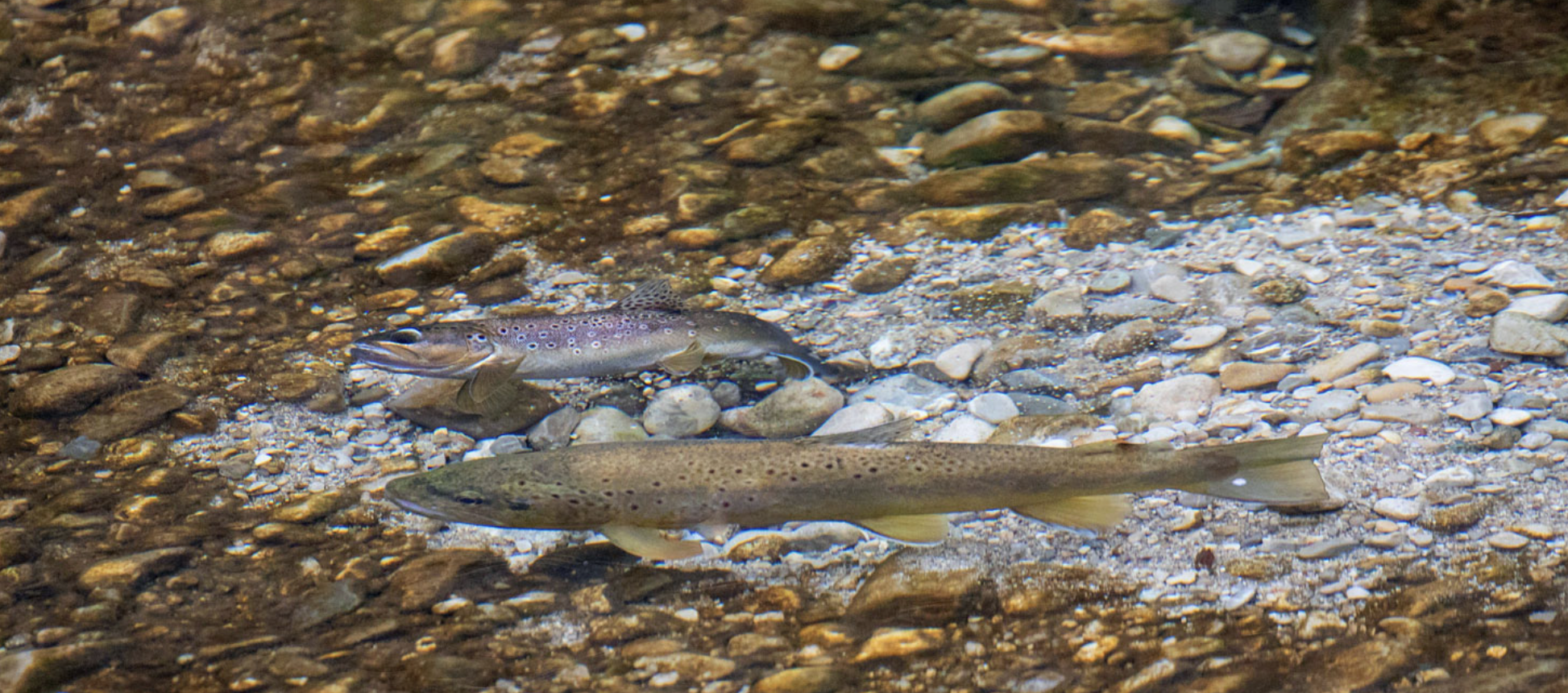Redd Alert: How to Fish Responsibly During the Spawn
Written By: Trent Jones
Fishing during the spawn is a topic that sparks debate among anglers, especially when it comes to understanding the difference between fishing to spawning trout and char versus simply fishing during the spawn. The former, targeting fish actively on their redds, is generally frowned upon because it can disrupt vital reproductive behaviors. Anglers who cast over active redds may inadvertently pull fish away from their nests or mates, which could damage the fish population in certain areas.
Photo from: wired2fish
Fishing to Spawning Fish
Fishing to spawning fish refers to deliberately casting to trout or char resting on their redds, often paired with a mate in the midst of spawning. This practice is considered bad form, particularly when dealing with wild or native fish, as disturbing this biologically necessary process could affect the population's ability to replenish itself. In many regions, targeting these fish could result in severe criticism from the angling community.
Photo from: discountflies
Fishing During the Spawn
Fishing during the spawn, on the other hand, is a more nuanced activity. Rather than targeting fish on their redds, many anglers focus on those waiting to take advantage of the spawn. For instance, rainbows might lie in wait behind spawning browns to feast on eggs, or browns might stalk spawning rainbows. This behavior is quite common and offers a way to fish responsibly without disrupting the spawning process.
Pre-Spawn Migration
Before the actual spawn, fish often migrate upstream in anticipation of spawning. This pre-spawn movement can provide anglers with opportunities to catch bigger fish without the ethical dilemma of casting over active redds.
Photo From :Flyfisherman
Identifying Redds
To avoid disturbing spawning fish, it’s important to learn how to identify redds — the nests that trout, char, and salmon create for their eggs. Redds are cleaner than the surrounding river bottom, typically found in oxygenated, moving water, and often located where there’s a mix of fine gravel and larger rocks. If you spot a redd, especially one with fish on it, it's best to leave it alone.
Photo From: vailvalleyanglers
Understanding the Spawn Cycles
Each trout species spawns at different times of the year, and knowing these patterns can help you avoid sensitive periods:
Brown Trout: Spawn in the fall, starting as early as mid-September and continuing through November.
Rainbow Trout: Spawn in the spring, often starting their migration in the fall but actively spawning by March or April.
Cutthroat Trout: Spawn later in the spring, typically waiting for water temperatures to rise above 50 degrees.
Brook Trout: Like browns, they are fall spawners, with peak activity in October.
Arctic Grayling: Early spring spawners, often starting under high water conditions in rivers and streams.
Bull Trout: Begin migrating in mid-summer, with spawning starting as early as August.
Practicing Caution
While fishing during the spawn can be rewarding, it requires caution. Avoid fishing to fish actively on their redds, and always keep an eye out for cleaner, freshly swept areas of the riverbed where fish might be spawning or protecting eggs. By knowing when fish spawn, identifying redds, and fishing responsibly, anglers can continue to enjoy the thrill of the season without disrupting the delicate spawning process.





